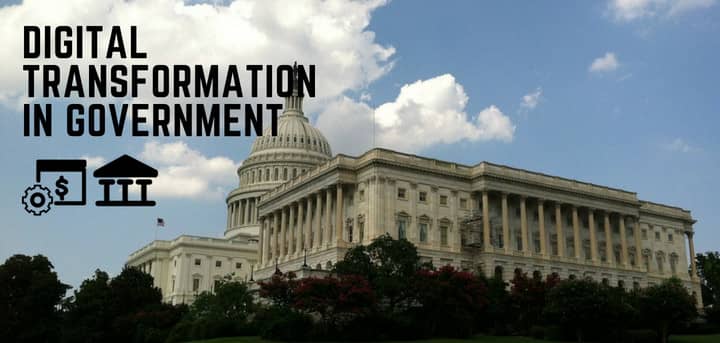
In this post, we’re going to condense our experience as a provider of digital transformation software and solutions for some of the largest government agencies and financial institutions in the world. If you want to move a massive government organization from paper and physical branches to digital services, what is it you should know? What are the references, benchmarks and goals? At the end of it, what are the chances that the entire process will be successful?
I’ll divide this ready reckoner for digital transformation in government into four sections. First is the definition (your definition) of digital transformation. Second is a double-take inside, within your organization, which will serve as a predictor of success. Next comes the question of what, out of the myriad processes and operations you have, to transform or digitize or automate. And lastly, there is the question of performance management, which is about setting goals, collecting feedback and metrics, and keeping it completely transparent.
1. Defining digital transformation for government.
digital transformation for effective governmentThe ideal definition of digital transformation is the implementation of software and / or hardware systems that automate functions, or some processes within functions, that were being done physically by your staff.
But that’s not going to work for a large government agency. The goal of digital transformation in this case is to make government more efficient. You can label a lot of things as digital transformation. Take all the data you have locked up in silos and make it open data available for use by anyone or any company, public or private. That itself qualifies as digital transformation. You can then expand the scope to include online applications and registration, tax payments and every other service that government provides.
You can do virtual appointment scheduling for people who want to come and talk to someone in government. Wait times in government offices are one of the biggest pain points that creates inefficiencies in the system. Eliminating this also creates one huge advantage – customer identification. You can identify every single customer who makes use of the system, and that too right at the first point of interaction – before they even talk to you or come to see you.
So, let’s do this one more time – How do you define digital transformation for government? The use of digitization to create efficiencies for government servants, the agency they work for, and the citizens they serve.
2. Predictors of success – Strategy, leadership, workforce skills, digital culture, and user focus.
Now that you defined what it is that you’re trying to do, let’s find out if it’s even possible. Putting out an RFQ and leaving it to the vendor chosen is not going to work here because it needs education. Both your workforce and the citizens who are your users need to be educated on how to make use of the new digital system. Whether they even attempt to do this is dependent on a “culture of digital” spreading across society and your agency. Without that, the technology is completely wasted.
The chart below is from a Deloitte Global Survey that pinpoints the characteristics of a digitally maturing organization, based on four characteristics – Strategy, leadership, workforce development, and user focus.
govt digital transformation mature orgs
Your decisions about what to transform, and the goals of that transformation, must be chosen based on the chart above. Look at where your organization is on this chart, and select what to transform. More on this below.
3. Transform core capabilities of digital government.
How do you choose which part of government you want to drag, kicking and screaming, into the digital era? Let me share with you a McKinsey report on government transformation. Specifically, I refer to a section in it on the core capabilities of digital government. It says, and I quote,
“Governments typically begin their digitization efforts by rebuilding a few fundamental capabilities around advanced technologies. With experience, they can broaden their digitization programs…”
They group capabilities into four broad categories – services, processes, decisions, and data sharing.
The report authors recommend that government should conduct surveys to find out which are the biggest complaints of its citizens, and then digitize services that yeild the big gains in satisfaction. If the people are concerned about costs and efficiency, then the priority should be to digitize services that are most heavily used and those that account for the most spending.
4. Performance management to make government effective, efficient and accountable.
I’d start with data sharing, because transparency and private enterprise applications built atop the data sets force government to be more efficient when the data becomes public.
The data sets that NOAA and other federal agencies have made public are proof enough of how effective this is. But let me give you a more pertinent performance management case study – Results Washington.
Washington State has a “Goal Map” for a more efficient, effective and accountable government.
Here’s a list of some of their specific goals that address the kind of big gains in efficiency and effective government that digital transformation can bring about.
1. Cutting wait times by 82%;
2. Issuing refunds 26 days faster;
3. Incoming calls answered 8 seconds faster;
4. Backlog of overdue public disclosure requests reduced from 415 to 17;
5. Saved $2.5M in Mediclaim application processing manpower; and more.
These are the kind of results or goals that you should be targeting when you initiate a process of digital transformation in government. So define what it means to your organization, check if its feasible given your culture and resources, identify the most high-priority core capabilities to transform, and set highly specific goals to be achieved as a result.